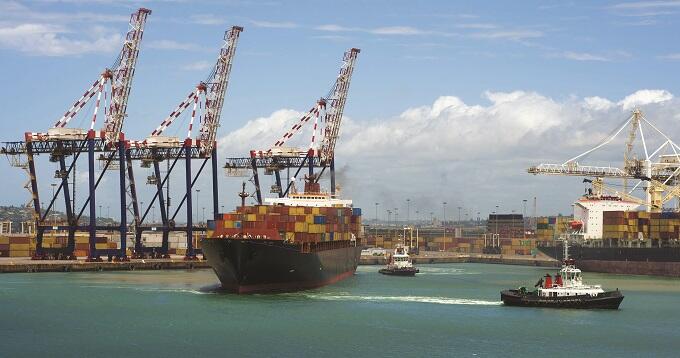
Africa’s potential ‘born digital’ trade agreement
The African Continental Free Trade Area Agreement has the potential to be innovative in its conception as a 21st century arrangement and become the world’s first ‘born digital’ trade agreement
The African Continental Free Trade Area (AfCFTA) agreement, presently signed by 52 African Union (AU) member states, is remarkable in its geographic coverage and ambition to create a single market for the continent. The agreement’s extensive protocols will cover trade in goods, trade in services, investment, competition and intellectual property rights.
Following its ratification by the Gambia in April 2019, the agreement is now set to shift the nature of economic relations in the region: intra-African trade is expected to rise by more than 50%. The AfCFTA also has the potential to be innovative in its conception as a 21st century arrangement and become the world’s first ‘born digital’ trade agreement.
Free trade agreements, negotiated for the benefit of businesses and consumers, can be challenging to understand and apply. Even legally trained experts may find it difficult to navigate the complex array of interactions between different trade agreements and domestic rules. These issues are compounded by the reality that legal texts are often difficult to access – whether unavailable electronically, not up-to-date or not easily searchable.
Survey data from the 2018 ECORYS Study on the use of Trade Agreements Final Report suggests that key barriers to the use of free trade agreements include limited availability of information and that information is difficult to understand. This can mean intended beneficiaries do not use the agreements to their advantage, undermining expected economic and social outcomes.
While effective use of the rules presents a challenge for all businesses, it is especially problematic for micro, small and medium-sized enterprises (MSMEs). This is due to the resources they require for interpretation, determination of calculations and compliance with documentation. As the majority of businesses in Africa are small, the AfCFTA must target these enterprises to meet its objective to ‘promote and attain sustainable and inclusive socio-economic development’. Fortunately, legal technology can improve access to, and the functionality of, trade agreements for different user groups, including enterprises, customs agencies and policymakers.
A ‘born digital’ AfCFTA would make the agreement easier to access, understand and apply. At the most basic level, this would imply the creation of an authorized ‘machine consumable’ translation of the text. Such a computer-friendly version of a trade agreement could, and should, equally represent any natural language counterpart. To add to usability, computational clauses, navigational aids and meta-data information could be integrated via digital formats.
Use of emerging standards such as Legal RuleML would enable users to easily search and jump between related sections. Meta-data on specific sections could help users to identify particular provisions. This would be especially helpful for those unfamiliar with legal and trade terminology when searching for relevant parts of an agreement.
A digital AfCFTA also provides an opportunity for home-grown innovation. Creating a machine consumable version of the agreement would provide developers with the means to layer other technological solutions over the digitally expressed clauses, making them even more user friendly and accessible.
Several initiatives are making progress in the area of ‘rules as code’. For example, New Zealand is providing domestic laws in the Extensible Markup Language (XML). Globally, the Xalgorithms Foundation is working to enable the availability of legislation in automation-friendly, computer-executable forms. Its alliance of contributors has developed components for online publishing, discovering and fetching of digitally expressed laws via an ‘Internet of Rules’.
Thus, a ‘born digital’ AfCFTA could include online schedules providing executable forms of rules to be used to automate cross-border transactions that involve the determination of calculations. To do so, it would be necessary to express relevant clauses of the AfCFTA agreement as algorithms. Creating a digital translation and schedules of executable rules would ensure consistency across the entire trade area and reduce the need for individual member states to duplicate resources in digitising the agreement.
A digital AfCFTA would be able to support trade-facilitation systems and dramatically enhance the deployment of any single window. There are also significant implications for the automation of cross-border e-commerce in the free trade area as platforms would be able to fetch and apply rules in real time.
Because the AfCFTA is implemented by AU member states, computer executable rules would need to exist as a template to seamlessly integrate into national customs systems.
Ideally, these computer-language versions of laws will be openly accessible. With the rules coded in this way, individuals without trade or legal training – such as small traders – can more easily ensure they are seizing the benefits of the AfCFTA. Over time, these rules could be integrated with other systems, such as e certificates of origin, as well as other digital tools important to trade, such as financing mechanisms, payments systems and digital identity mechanisms.
A digital AfCFTA will make it more simple and cost effective for those who engage in trade to access, interpret and apply the new rules. If executed correctly and practically focused, the benefits of the AfCFTA can be more easily realized and its intended beneficiaries can get the most out of it.
Fortunately, there is more than enough legal, developer and technical talent in Africa to ensure such a version of the agreement could be achieved. There is a good case for leapfrogging access to trade agreements through technology in the African context. All that is needed is the will to make it happen.



